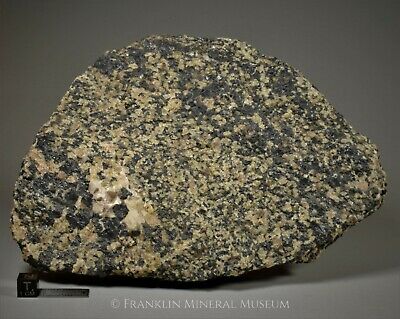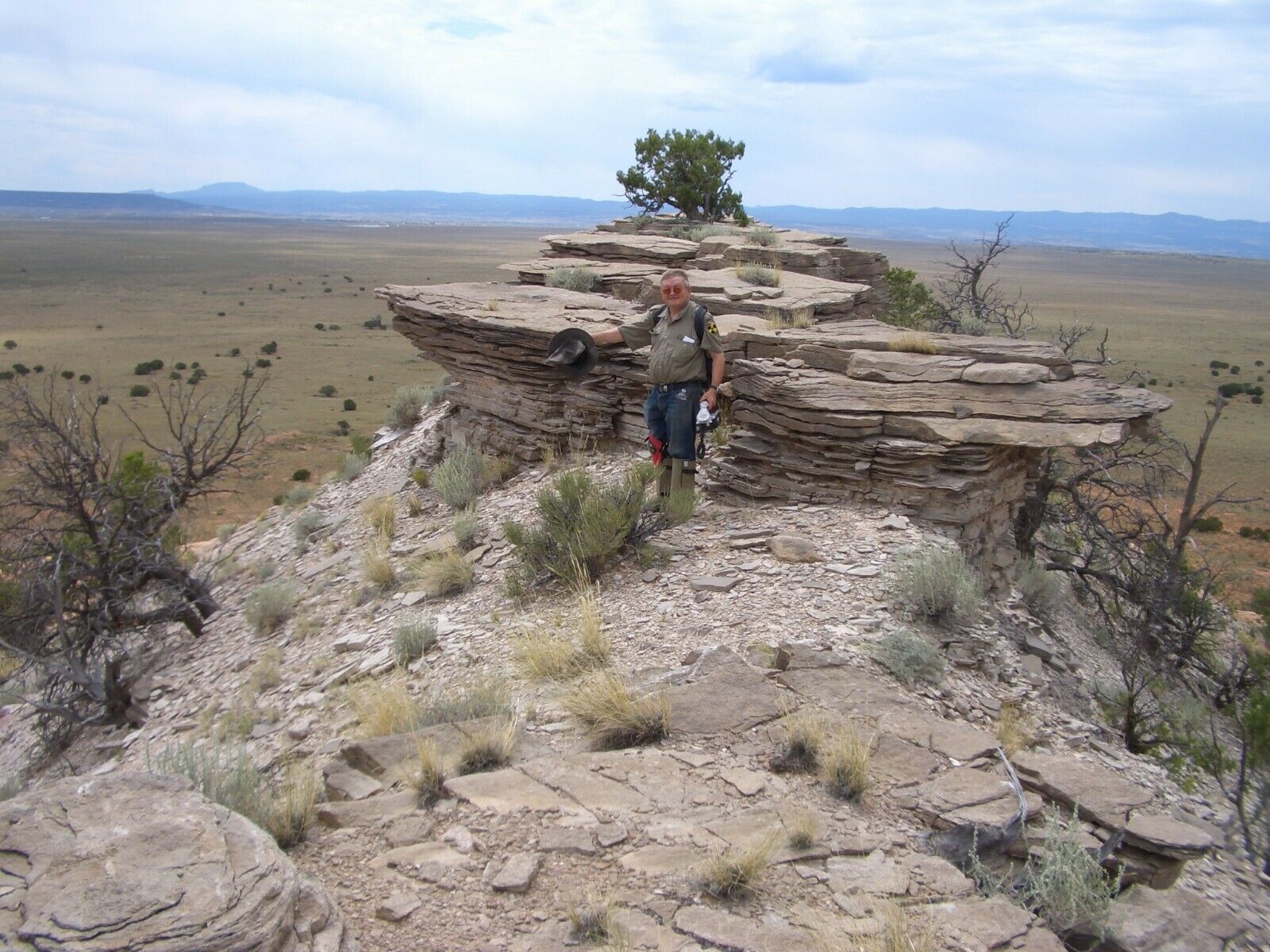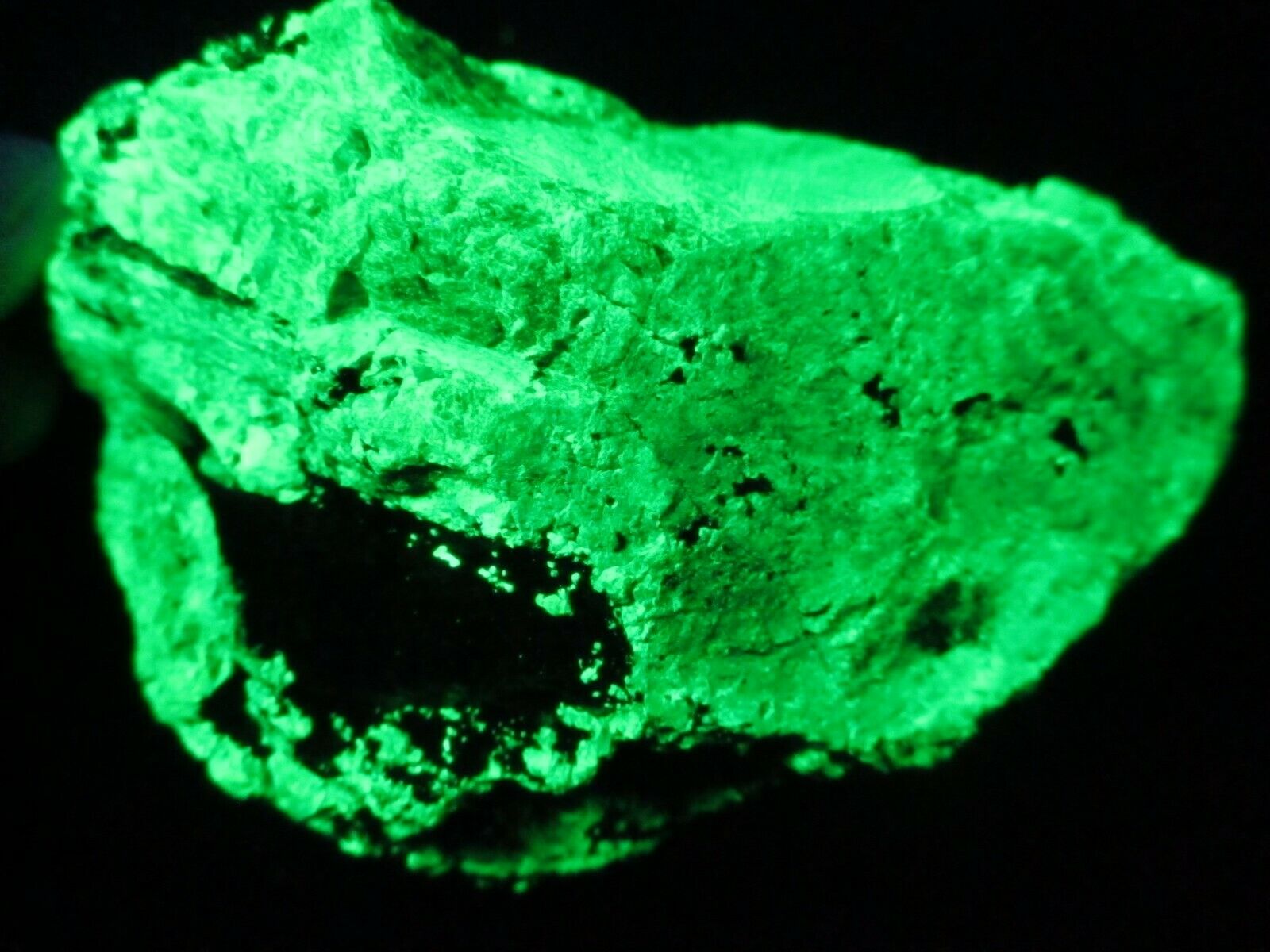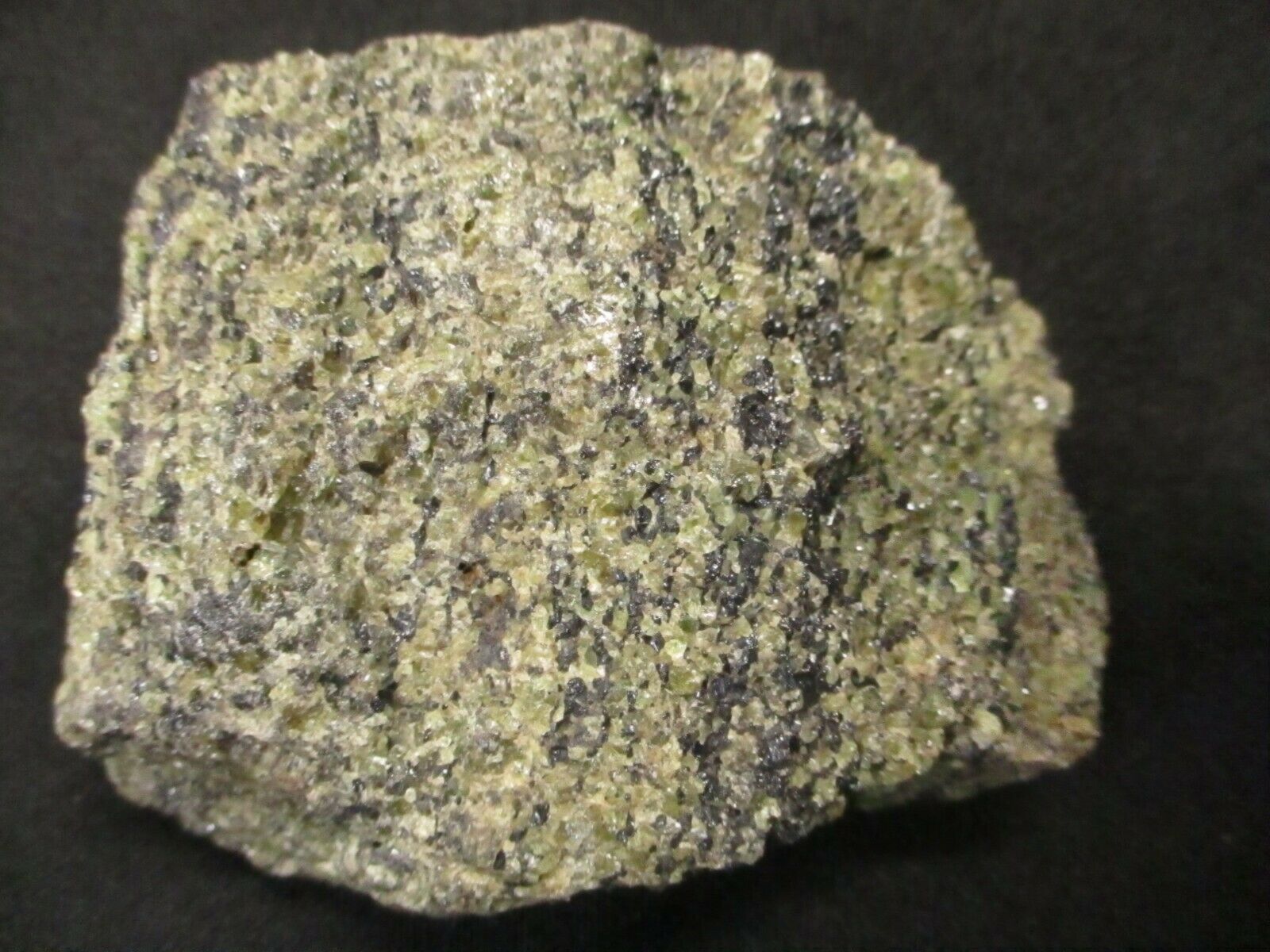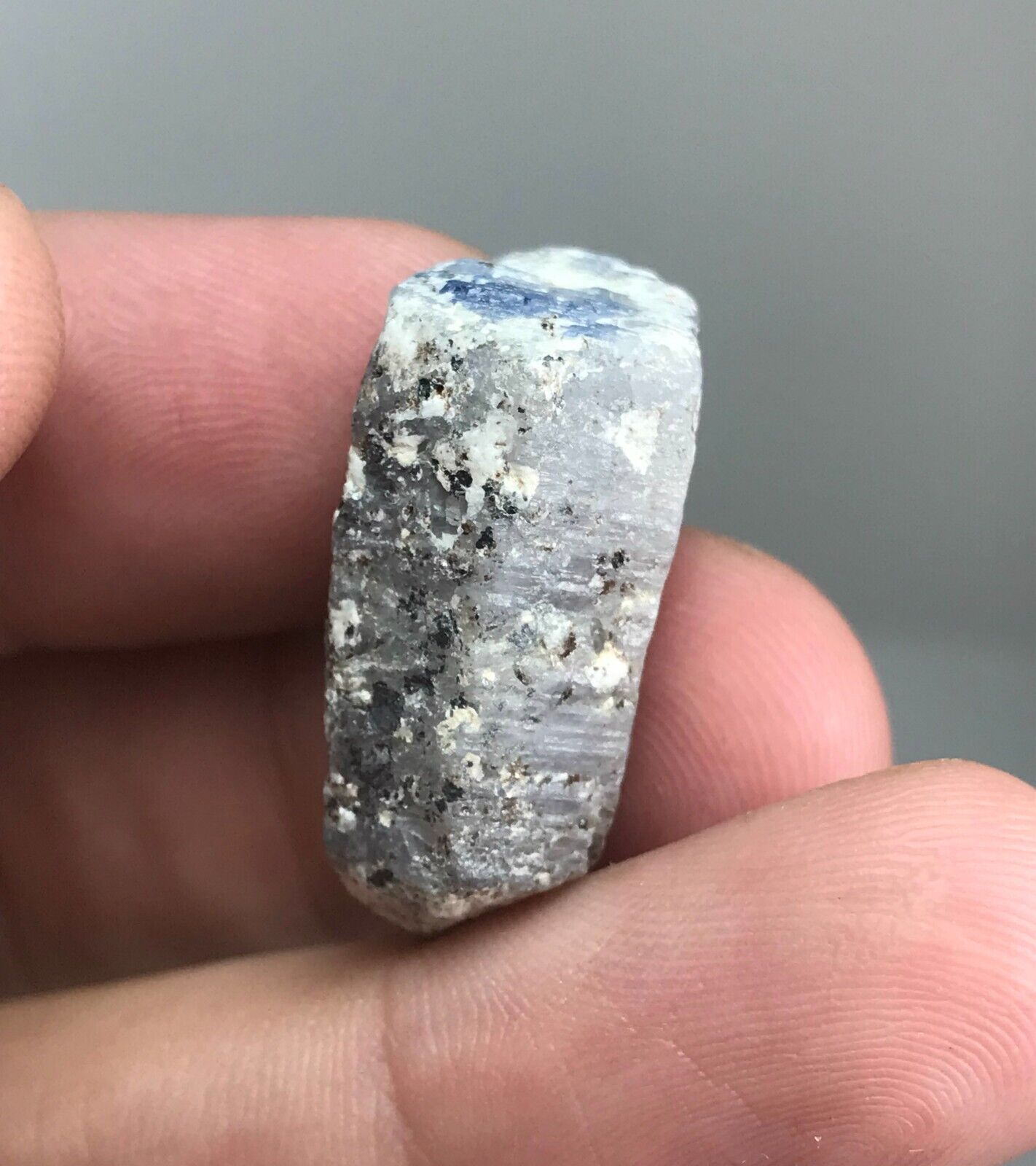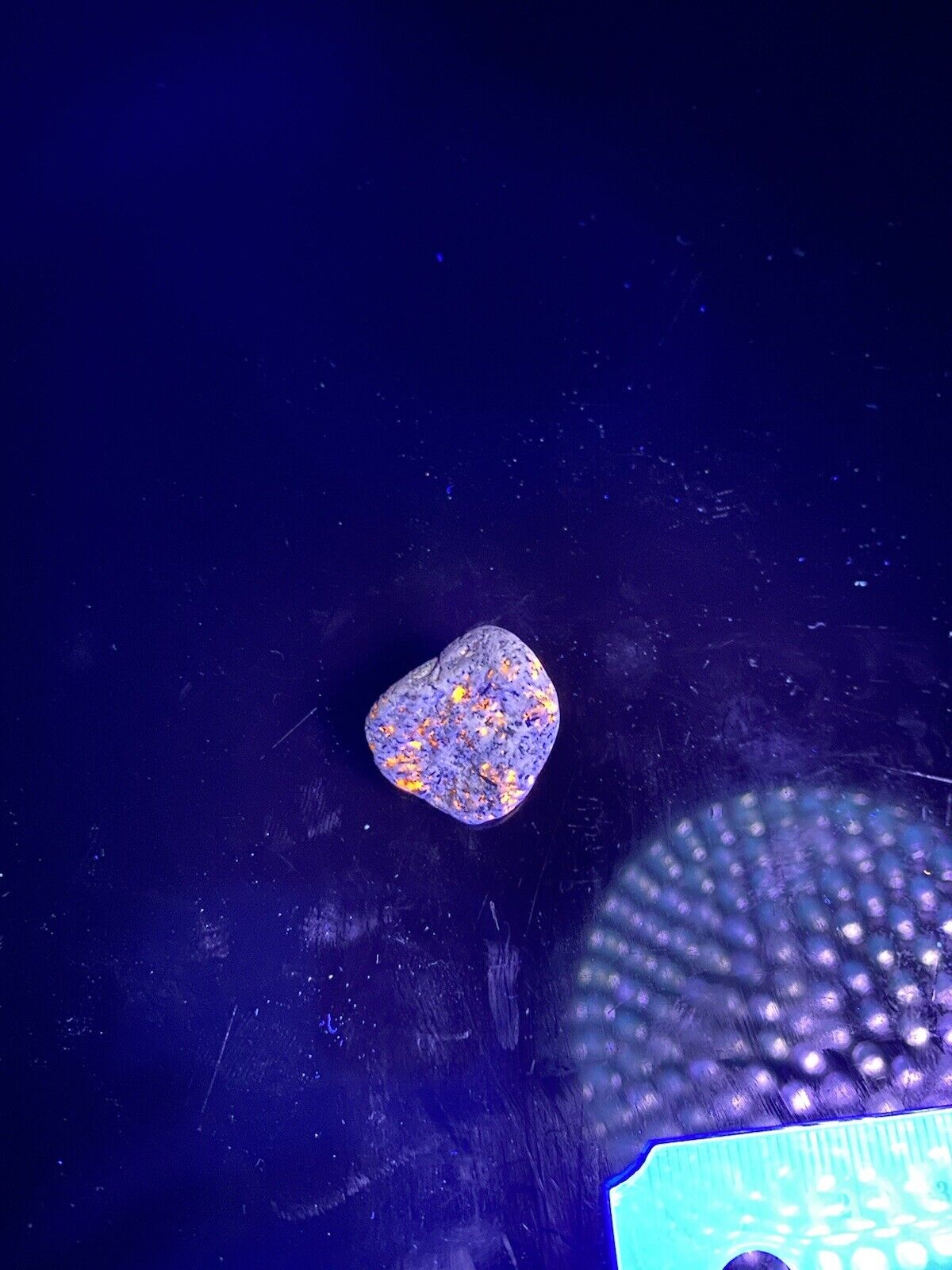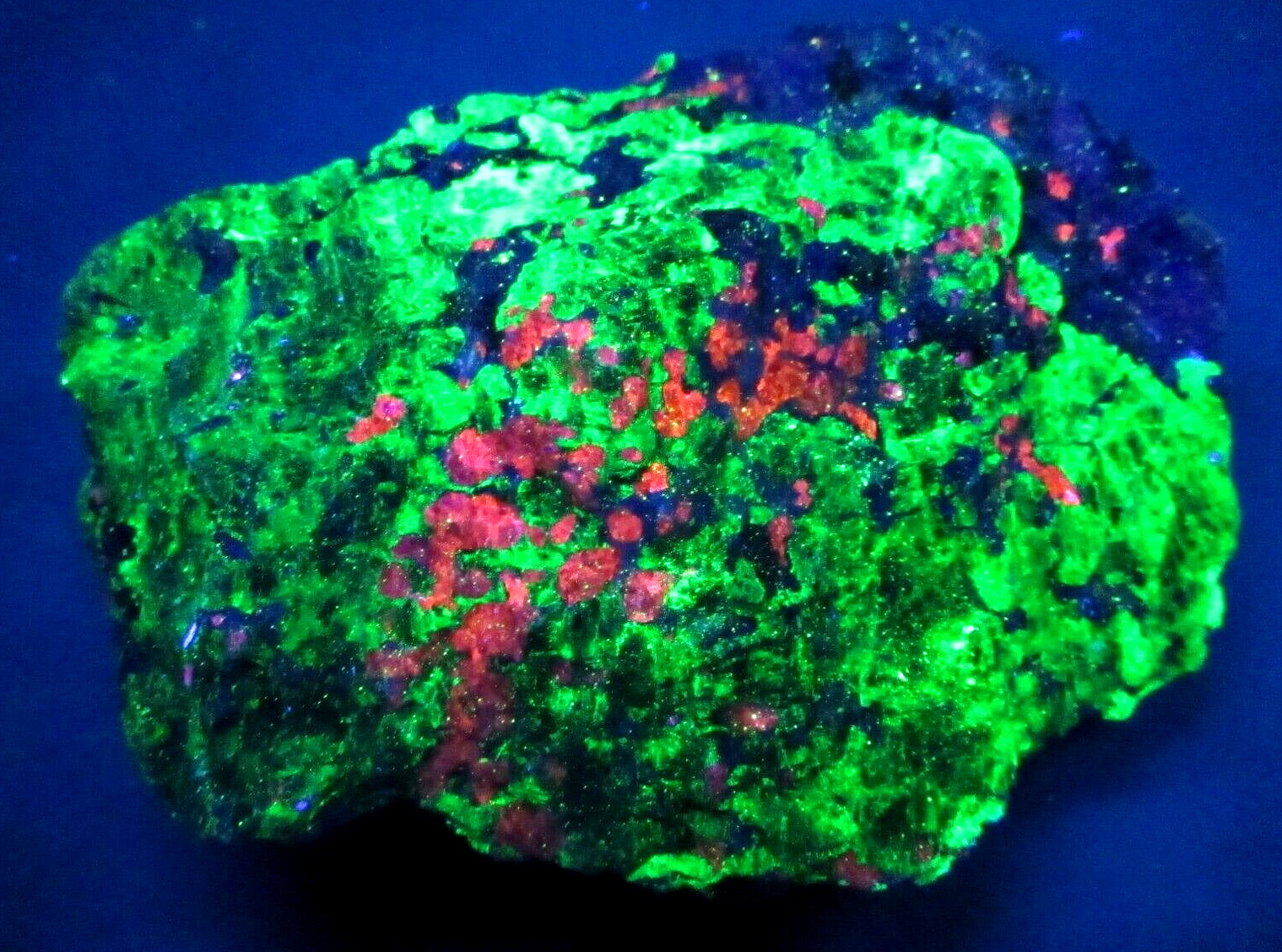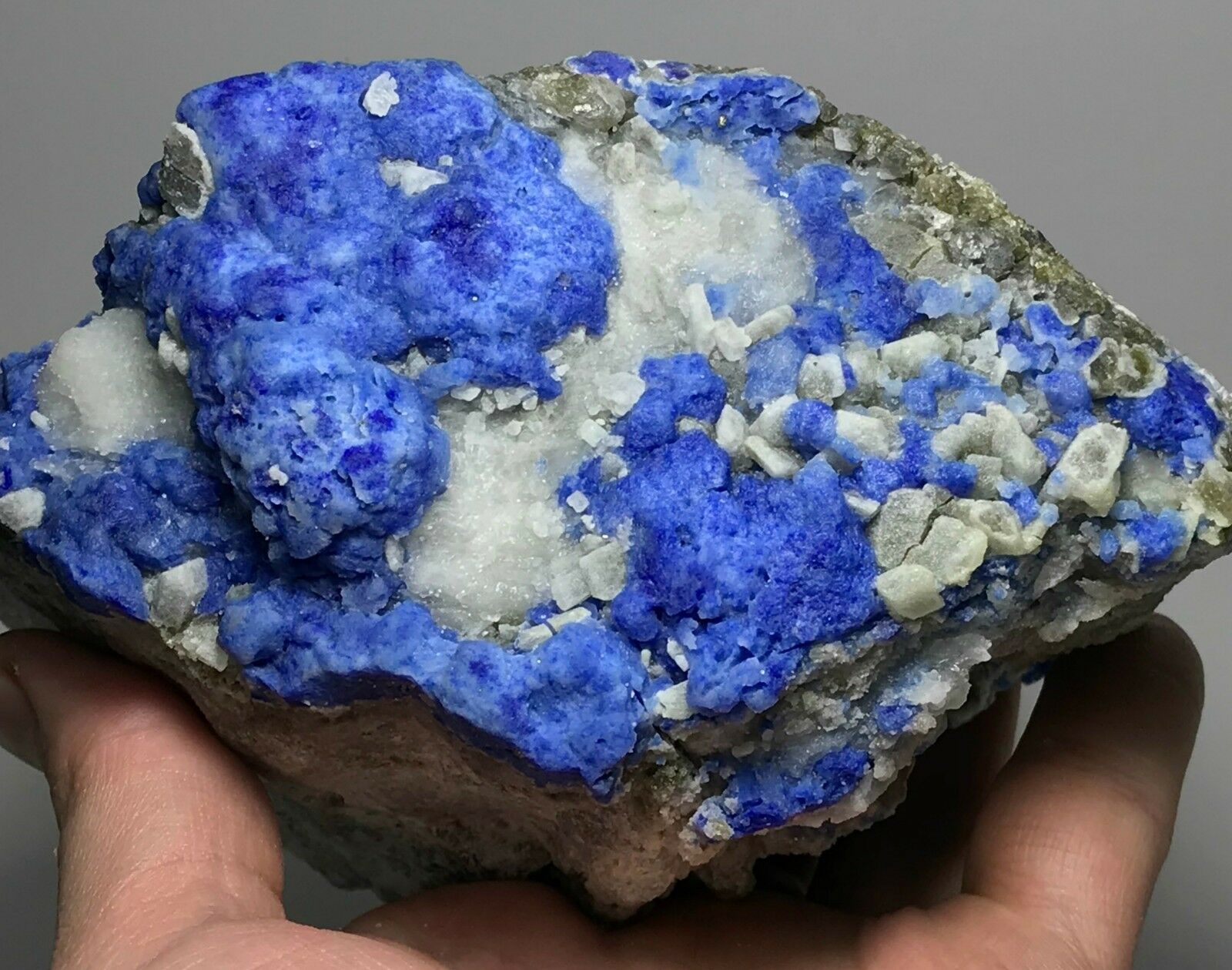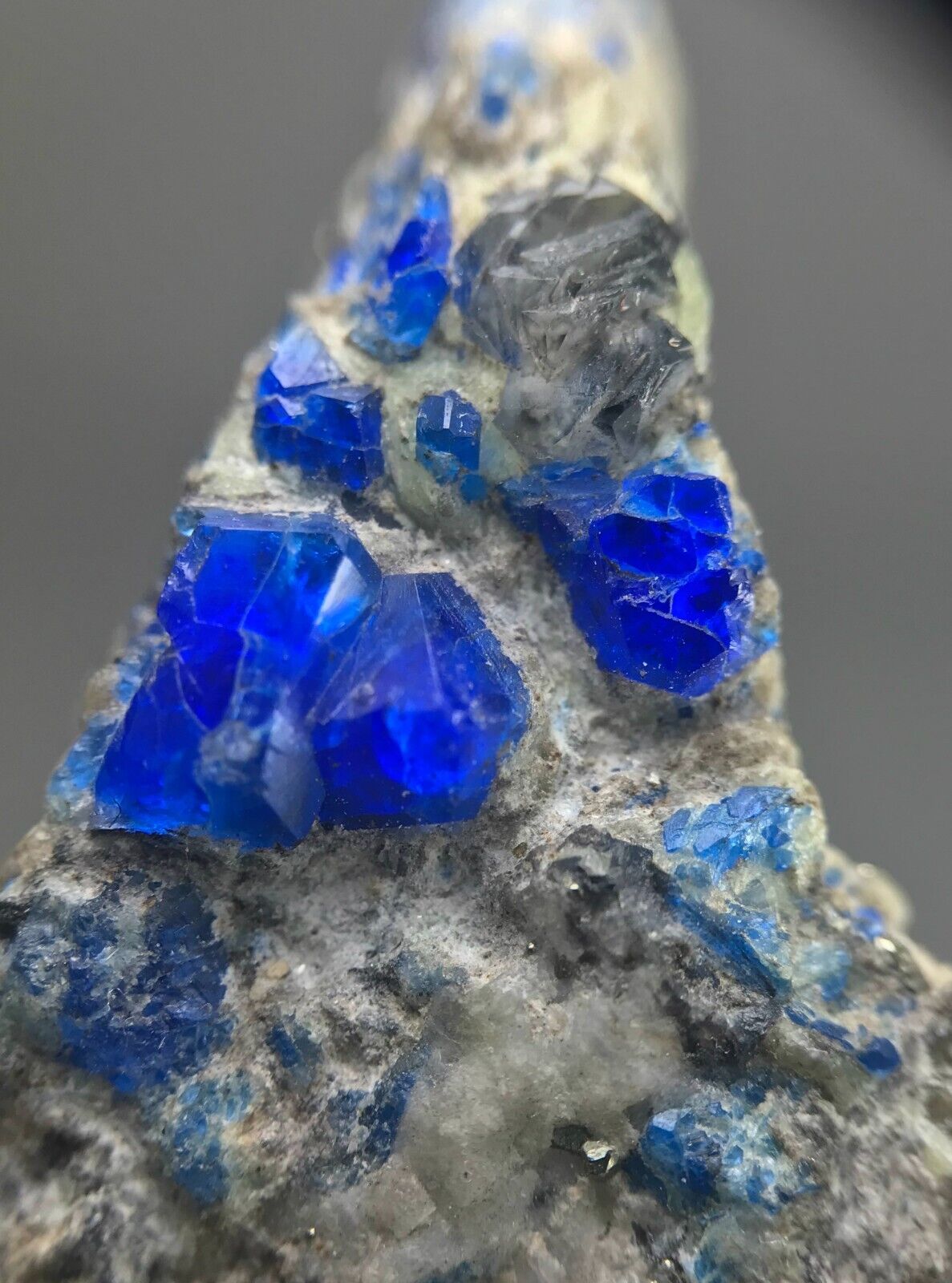-40%
High grade willemite ore - Sterling Hill, Ogdensburg, NJ
$ 52.8
- Description
- Size Guide
Description
Here we have a very rich, high-grade slab of zinc ore. The slab is essentially composed of two zinc-bearing mineral species. First is the abundant grains of vitreous, pale yellow-brown, semi-translucent willemite. Next are the abundant grains of black, metallic franklinite. There are a few minor spots and small sections of white, opaque calcite here and there throughout the matrix. There is a weakly developed gneissic texture for portions of the specimen. A gneissic texture is a coarsely foliated texture in which the minerals have been segregated into discontinuous hands, each of which is dominated by one or two minerals. These bands range in thickness from 1 mm to several centimeters. The individual mineral grains are macroscopic and impart a striped appearance to the specimen.Willemite was named after King Willem of the Netherlands after the locality at the Moresnet (Plombières-Altenberg-Moresnet) mining district, Verviers, Liège Province, Belgium. This species was previously discovered in 1825 and was identified as "siliceous oxyde of zinc" by Lardner Vanuxem and William Hypolitus Keating. At the time, "siliceous oxyde of zinc" was a synonym of electric calamine, now known as hemimorphite. A series of errors and misunderstandings eventually led to the Belgian location getting the type locality attribution rather than Franklin.
Franklinite was named in 1819 by Pierre Berthier for the type locality of Franklin Furnace (now Franklin Borough), New Jersey. Silliman (1920) translated Berthier's article: "As the chemical nomenclature cannot in every instance furnish a name, I propose to give it that of The Franklinite, in order to remind us that it was found, for the first time, in a place to which the Americans have given the name of a great man, whose name is equally venerated in Europe as in the new world by all the friends of science an humanity." and this would be Benjamin Franklin. Franklinite is a member of the spinel group, the only one of three spinel family members to have zinc, gahnite, and zincochromite being the others. This species has been reported and observed in many world localities, though nowhere else in minable quantities.
The willemite fluoresces a bright green and the calcite a bright red under shortwave (254nm) ultraviolet light. The specimen normally lays flat and requires a prop to display optimally. This is a very rich display-worthy example of high-grade zinc ore.
Dimensions are
21.1x16.4x3.5cm - 8¼x6½x1¼in.
Please note the centimeter cube and inch bar for scale.
Weight in grams and ounces:
2369.0g - 83.56oz.
From the
Sterling mine, Ogdensburg, NJ.
The previous collection this specimen was in is
#114, Earl Verbeek.
#114 is the museum's Collection Sale number previously offered in the museum shop.
>>> We do
COMBINED SHIPPING
for multiple items. To
request
an invoice from us that combines shipping
ALWAYS
, click the
Add to cart
button on eBay to add items until you are done.
DO NOT PROCEED
to checkout; instead, click the
Request Total from Seller
button. <<<
=== There is an instructional video on how to request combined shipping is here
https://www.youtube.com/watch?v=FvDe7Fg7R4Q
===
All potential buyers need to be aware that being able to view fluorescent minerals requires an ultraviolet lamp. Most of the minerals from the Franklin and Sterling Hill zinc mining district fluoresce under
shortwave ultraviolet light
.
The shortwave wavelength is
254nm
or otherwise known as
UV C
. Always read the description carefully to determine if the main mineral of interest for a particular specimen will fluoresce.
ALL
fluorescent minerals depicted in our storefront are illuminated by two (2) 9 watt Triple short/mid/longwave AC Model 9SM-110 Way Too Cool LLC ultraviolet lamps, and the shortwave tubes and filters were replaced in late 2018.
There are several available brands and models of ultraviolet lights on eBay and other online sources. For further information on ultraviolet light and fluorescent minerals, copy and paste the following and go to >>>
geology.com/articles/fluorescent-minerals
.
>>>>
We Buy Collections
<<<<
DISCLAIMER: Every reasonable effort was made to identify the mineral species noted in each specimen accurately. The occasional label from previous collection(s) may misidentify some species, and the current title and description here reflect the latest mineral species identification.
A modest effort was made to depict a fluorescent specimen accurately as possible.
In some cases, overexposure should be expected in select photographs to compensate for a fluorescent specimen's weak response.
All buyers should exercise safe viewing practices regarding the use of ultraviolet light. Visual dark adaption is highly recommended in the optimal viewing of fluorescent minerals. Buyers should also be aware of what type of lighting to view the specimens under. This can result in perceived differences of color and contrast due to color and contrast shifting under various kinds of lights available.
All photographs were taken with a Nikon D5300 digital camera with a Nikon DX AF-S 18-55mm lens attached with a UV filter. Lighting was done with a pair of OSRAM 8.5 watt LED A19 5000K 800 lumens bulbs in brushed aluminum reflectors. The photographs were processed on a color-calibrated flat panel monitor. Do note the Imperial measurement conversion is the nearest equivalent to the listed metric measurement.
--- All photographs appearing on this listing or any other Franklin Mineral Museum listing are the property of the Franklin Mineral Museum. Photographs
can be used strictly for personal use onl
y
. Otherwise, the photographs posted here are protected by U.S. Copyright Laws. They are not to be downloaded or reproduced for public use or distribution in any way without the written permission of the Franklin Mineral Museum. ---
